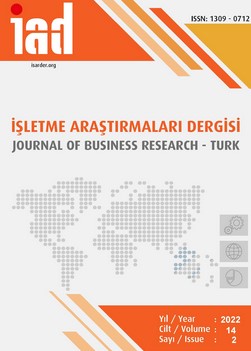Kısa Vadeli Borçlanmanın Aktif Karlılığı Üzerindeki Etkisi: BIST Sınai Endeksi Örneği
The Effect of Short-Term Liabilities on Return on Assets: A Case of BIST-XUSIN Index
Author(s): Servet Say, Mesut DoğanSubject(s): Business Economy / Management, Accounting - Business Administration
Published by: Orhan Sağçolak
Keywords: Short Term Liabilities; Return on Assets; BIST; Manufacturing Industry;
Summary/Abstract: Purpose – In today's global competitive environment, it is important for businesses to use their assets effectively and to manage these assets. These resources, which are used for asset financing as foreign liabilities and equity, also affect the profitability of the business. In this context, the purpose of the study is to determine the effect of short-term liabilities on the return on assets. Design/methodology/approach – The data of 96 companies operating in the BIST-XUSIN Index between 2009 and 2020 were used without interruption. In empirical analysis, IPS (Im, Pesaran & Shin) unit root test, LM (Lagrange Multiplier) and CD (Cross Section Dependent) and SUR estimator (Seemingly Unrelated Regressions SUR) methods were used. Findings – As a result of the models, a negative relationship was determined between short-term liabilities and return on assets for the companies. Discussion – The short-term borrowing patterns of companies operating in BIST-XUSIN affect their return on assets. These companies can increase their profitability especially by keeping the short-term debt ratio in total resources at an optimum level. In addition, companies in the BIST-USIN Index will manage the collection of receivables more effectively and reach the optimum capital structure, which will help increase the return on assets.
Journal: İşletme Araştırmaları Dergisi
- Issue Year: 14/2022
- Issue No: 2
- Page Range: 1581-1589
- Page Count: 9
- Language: Turkish

